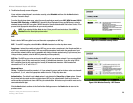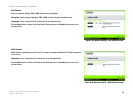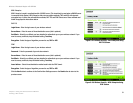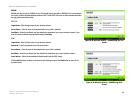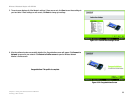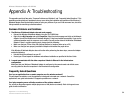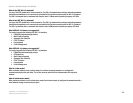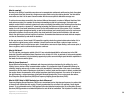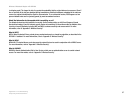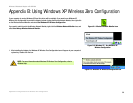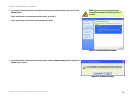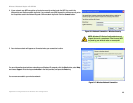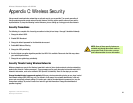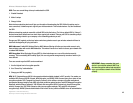
37
Appendix A: Troubleshooting
Frequently Asked Questions
Wireless-G Notebook Adapter with SRX400
(or chipping code). The longer the chip, the greater the probability that the original data can be recovered. Even if
one or more bits in the chip are damaged during transmission, statistical techniques embedded in the radio can
recover the original data without the need for retransmission. To an unintended receiver, DSSS appears as low
power wideband noise and is rejected (ignored) by most narrowband receivers.
Would the information be intercepted while transmitting on air?
The Adapter features two-fold protection in security. On the hardware side, as with Direct Sequence Spread
Spectrum technology, it has the inherent security feature of scrambling. On the software side, the Adapter offers
a variety of security methods, including WEP and WPA, to enhance security and access control. For more
information, refer to “Appendix C: Wireless Security.”
What is WEP?
WEP is Wired Equivalent Privacy, a data privacy mechanism based on a shared key algorithm, as described in the
IEEE 802.11 standard. For more information, refer to “Appendix C: Wireless Security.”
What is WPA?
WPA is Wi-Fi Protected Access, a wireless security protocol that can be used in conjunction with a RADIUS server.
For more information, refer to “Appendix C: Wireless Security.”
What is RADIUS?
RADIUS is Remote Authentication Dial-In User Service, which uses an authentication server to control network
access. For more information, refer to “Appendix C: Wireless Security.”



